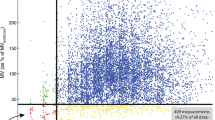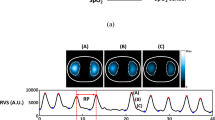Abstract
Esophagogastroduodenoscopy procedures are typically performed under conscious sedation. Drug-induced respiratory depression is a major cause of serious adverse effects during sedation. Capnographic monitoring of respiratory activity improves patient safety during procedural sedation. This bench study compares the performance of the nasal cannulas and oral bite blocks used to monitor exhaled CO2 during sedation. We used a spontaneously breathing mechanical lung to evaluated four CO2 sampling nasal cannulas and three CO2 sampling bite blocks. We placed pneumatic resistors in the mouth of the manikin to simulate different levels of mouth opening. We compared CO2 measurements taken from the sampling device to CO2 measurements taken directly from the trachea. The end tidal CO2 concentration (PetCO2) measured through the bite blocks and nasal cannulas was always lower than the corresponding PetCO2 measured at the trachea. The difference became larger as the amount of oxygen delivered through the devices increased. The difference was larger during normal ventilation than during hypoventilation. The difference became larger as the amount of oral breathing increased. The two nasal cannulas without oral cups failed to provide sufficient CO2 for breath detection when the mouth was fully open and oxygen was delivered at 10 L/min. Our simulation found that respiratory rate can be accurately monitored during the procedure using a CO2 sampling bite block or a nasal cannula with oral cup. The accuracy of PetCO2 measurements depends on the device used, the amount of supplement oxygen, the amount of oral breathing and the patient’s minute ventilation.




Similar content being viewed by others
References
Cohen LB, Wecsler JS, Gaetano JN, Benson AA, Miller KM, Durkalski V, Aisenberg J. Endoscopic sedation in the United States: results from a nationwide survey. Am J Gastroenterol. 2006;101(5):967–74. doi:10.1111/j.1572-0241.2006.00500.x.
Rex DK, Deenadayalu VP, Eid E, et al. Endoscopist-directed administration of propofol: a worldwide safety experience. Gastroenterology. 2009;137:1229–37. doi:10.1053/j.gastro.2009.06.042.
Levitzky BE, Lopez R, Dumot JA, Vargo JJ. Moderate sedation for elective upper endoscopy with balanced propofol versus fentanyl and midazolam alone: a randomized clinical trial. Endoscopy. 2012;44:13–20. doi:10.1055/s-0031-1291421.
Gross JB, Bailey PI, Connis RT, et al. Practice guidelines for sedation and analgesia by non-anesthesiologists. Anesthesiology. 2002;96:1004–17.
Fu ES, Downs JB, Schweiger JW, Miguel RV, Smith RA. Supplemental oxygen impairs detection of hypoventilation by pulse oximetry. Chest. 2004;126(5):1552–8. doi:10.1378/chest.126.5.1552.
Heuss LT, Chhajed PN, Schnieper P, Hirt T, Beglinger C. Combined pulse oximetry/cutaneous carbon dioxide tension monitoring during colonoscopies: pilot study with a smart ear clip. Digestion. 2004;70(3):152–8. doi:10.1159/000081515.
Chhajed PN, Heuss LT, Tamm M. Cutaneous carbon dioxide monitoring in adults. Curr Opin Anaesthesiol. 2004;17(6):521–5.
Waugh JB, Epps CA, Khodneva YA. Capnography enhances surveillance of respiratory events during procedural sedation: a meta-analysis. J Clin Anesth. 2011;23(3):189–96. doi:10.1016/j.jclinane.2010.08.012.
Eisenbacher S, Heard L. Capnography in the gastroenterology lab. Gastroenterol Nurs. 2005;28(2):99–105.
Soto RG, Fu ES, Vila H Jr, Miguel RV. Capnography accurately detects apnea during monitored anesthesia care. Anesth Analg. 2004;99(2):379–82.
Vargo JJ, Zuccaro G, Dumot JA, Conwell DL, Morrow JB, Shay SS. Automated graphic assessment of respiratory activity is superior to pulse oximetry and visual assessment for the detection of early respiratory depression during therapeutic upper endoscopy. Gastrointest Endosc. 2002;55(7):826–31.
Lightdale JR, Goldmann DA, Feldman HA, Newburg AR, DiNardo JA, Fox VL. Microstream capnography improves patient monitoring during moderate sedation: a randomized, controlled trial. Pediatrics. 2006;117(6):e1170–8. doi:10.1542/peds.2005-1709.
Donald MJ, Paterson B. End tidal carbon dioxide monitoring in prehospital and retrieval medicine: a review. Emerg Med J. 2006;23(9):728–30. doi:10.1136/emj.2006.037184.
Qadeer MA, Vargo JJ, Dumot JA, et al. Capnographic monitoring of respiratory activity improves safety of sedation for endoscopic cholangiopancreatography and ultrasonography. Gastroenterology. 2009;136(5):1568–76. doi:10.1053/j.gastro.2009.02.004.
Tassaux D, Strasser S, Fonseca S, Dalmas E, Jolliet P. Comparative bench study of triggering, pressurization, and cycling between the home ventilator VPAP II and three ICU ventilators. Intensive Care Med. 2002;28(9):1254–61. doi:10.1007/s00134-002-1421-4.
Battisti A, Tassaux D, Janssens JP, Michotte JB, Jaber S, Jolliet P. Performance characteristics of 10 home mechanical ventilators in pressure-support mode: a comparative bench study. Chest. 2005;127(5):1784–92. doi:10.1378/chest.127.5.1784.
Richard JC, Carlucci A, Breton L, et al. Bench testing of pressure support ventilation with three different generations of ventilators. Intensive Care Med. 2002;28(8):1049–57. doi:10.1007/s00134-002-1311-9.
Takatori F, Yamamori S, Inoue M, Abe S, Miyasaka K. A novel mainstream capnometer system for non-intubated pediatric patients requiring oxygen administration. Conf Proc IEEE Eng Med Biol Soc. 2011;2011:1189–92. doi:10.1109/IEMBS.2011.6090279.
Oberg B, Larsen V. The effect of nasal oxygen flow and catheter position on the accuracy of end-tidal carbon dioxide measurements by a pharyngeal catheter in unintubated, spontaneously breathing subjects. Anaesthesia 1995;50(8):695–8.
Author information
Authors and Affiliations
Corresponding author
Rights and permissions
About this article
Cite this article
Chang, KC., Orr, J., Hsu, WC. et al. Accuracy of CO2 monitoring via nasal cannulas and oral bite blocks during sedation for esophagogastroduodenoscopy. J Clin Monit Comput 30, 169–173 (2016). https://doi.org/10.1007/s10877-015-9696-5
Received:
Accepted:
Published:
Issue Date:
DOI: https://doi.org/10.1007/s10877-015-9696-5




